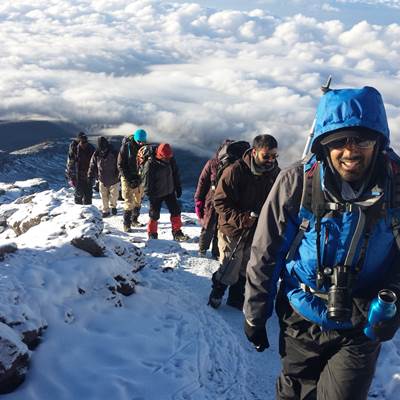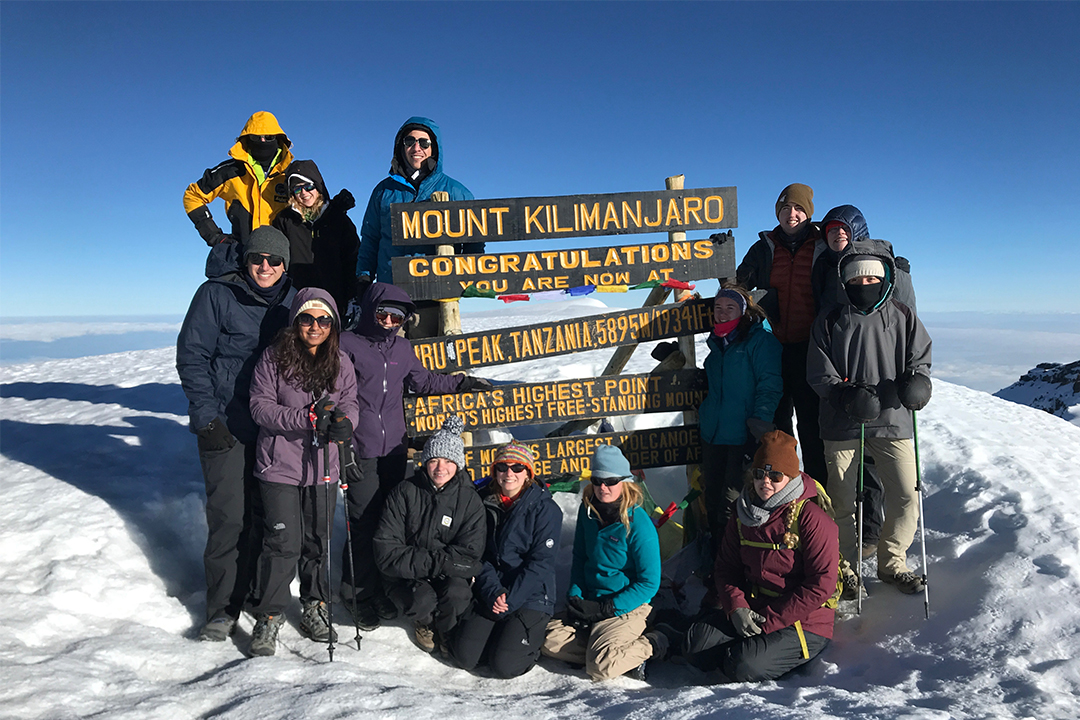How to Prepare for Your Hike on Mount Kilimanjaro

By holding proper planning, preparation, workouts, and correct equipment, a hike on Mount Kilimanjaro can be safe and pleasant to reach the highest mountain in Africa. Here’s a comprehensive guide on how to prepare effectively for your Kilimanjaro adventure:
- Physical Fitness
– Cardiovascular Endurance: Trekking involves many hours of climbing up the mountain and at high altitudes. Cardiovascular endurance is best achieved through activities that include hiking, running, cycling, or swimming, among others.
Strength training, particularly for your leg muscles, is crucial for overcoming the slopes during the hike. Exercises like squats, lunges, and calf raises are highly recommended. This is an important part of your preparation for a safe and pleasant hike on Mount Kilimanjaro.
Another key Strategy for preparing for the long and steep terrains of Mount Kilimanjaro is to gradually build up your endurance. This can be achieved by increasing the duration and steepness of the terrains you train on, through more frequent and longer hikes.
- Medical Preparation
– Health Check-Up: It is recommended that you go for a medical check-up with your doctor before going on a high-altitude trek.
Altitude Acclimatization: Cognitive knowledge about altitude sickness, including its signs, including headache, nausea, and fatigue, and ways to avoid it. It is better to get used to these conditions, so it is recommended to incorporate high-altitude hikes or stays in the training schedule.
– Vaccinations: Consult your physician or travel health clinic regarding immunization to be taken for Tanzania.
- Packing Essentials
– Clothing: Include t-shirts, sports bras, fleece jackets, any kind of jacket that is water and windproof, thermal wear, gloves, hats, and woolen socks.
– Footwear: Buy strong, second-skin hiking shoes/boots with support and grip on the ankle area.
– Gear: It is advisable to pack a comfortable daypack, trekking poles to enhance stability, a headlamp or flashlight with some backups, UV-protected sunglasses, and a sleeping bag that will do well in sub-zero temperatures.
Personal Items: Some of the necessities that you should consider packing are sunscreen, lip balm, personal medications, a first aid kit, toiletries, and one or two bottles of water or a hydration system.
- Mental Preparation
– Research: Learn the trekking paths on Kilimanjaro, the weather conditions and the affects of altitude in the body. Understanding what is most likely to happen when at each of the stages of the trek.
– Positive Mindset: The high altitude trekking always involves mental and physical tests on the hikers hence the need to remain strong mentally.
- Training Hikes
– Practice Hikes: Also, try to consistently train at a gradual gradient for at least three months and work up to the distances and elevation gains that you will find on Kilimanjaro.
– Backpack Weight: The contraption is done to train with a weighted backpack to mimic carrying your gear and supplies on the mountain.
- Altitude Preparation
– Acclimatization: While training for the hikes or before your prior travel, it is advised to do the ascent gradually to high altitudes in order to condition your body for changes at high altitude.

- Logistics and Booking
– Permits: Apply for all the necessary permits in your desired Kilimanjaro route through the registered tour operators, or Tanzania National Parks.
– Guided Tour: As a result, the consideration of hiring an experienced guide, porters and cooks who assist in organizing the trek by offering meals, shelter among other services.
- Environmental and Cultural Considerations
– Leave No Trace: Hikers should be more careful not to pollute the environment by taking along all their waste products and conforming to the principles of Leave No Trace.
– Local Customs: Tanzania has a decent culture that trekkers should honor when utilizing the open land for the voyage.
- Final Preparations
– Travel Insurance: This means you should get a travel insurance policy that covers high altitude trekking as well as emergency evacuations.
– Final Checklist: Check the list with the items to bring, double check for the arrangements on transporting and confirm that passport, permits are valid and arranged.
Conclusion
Like any other activity involving a physical challenge, Mount Kilimanjaro deserves serious preparation, proper planning, and good preparation among the prerequisites to the hike. Thus, by spending time on the proper training, equipment collection, and learning the peculiarities of high-altitude walking, you can increase the probability of obtaining satisfying and memorable summiting outcomes.
Set off your Kilimanjaro climb with some confidence, environmentally friendly outlooks and a desire to bring home the best memories after the climb of the roof of Africa.


